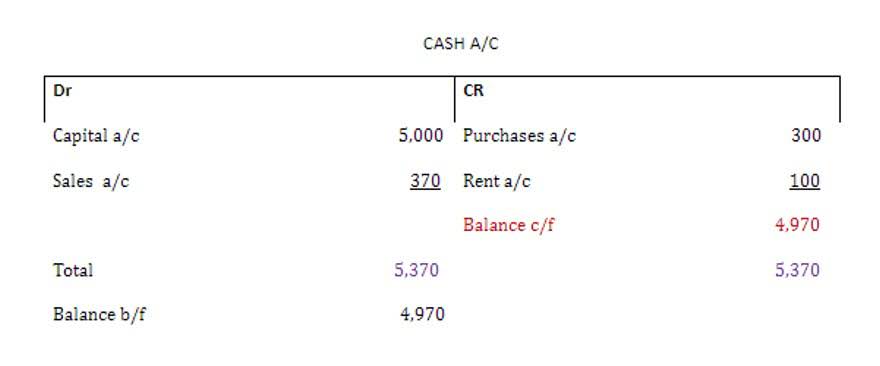
For example, based on a cash basis or cash accounting principle, revenue is recognized in the Financial Statements when cash is received. Revenues are realized or realizable when a company exchanges goods or services for cash or other assets. So if a company enters into a transaction to sell inventory to a customer, the revenue is realizable. In this case, the retailer would not earn the revenue until it transfers the ownership of the inventory to the customer. Unbundling a contract may apply when incentives are offered at the time of sale, such as free servicing or enhanced warranties. In a situation where the company provides goods and services for which the cash is to be received at a future date, the revenue is recorded immediately without waiting for the time when the cash will be collected.

Percentage of Completion Method

This principle clearly outlines when and how the revenue earned should be recognized and recorded in the books of accounts. It provides a uniform and useful framework that records the amount collected. Since earning revenue is the main aim of a business and is a benchmark to evaluate its performance, it should be recorded with reasonable certainty and help in improving comparability among companies. For example, a company that sells products on an installment plan would use the installment method to recognize revenue. Revenue is recognized as payments are received from the customer over the lifespan of the installment plan.
- In this case, the service should recognize an increment of the advance payment in each of the four months covered by the agreement, to reflect the pace at which it is earning the payment.
- The revenue recognition principle requires that the revenue must be realized or realizable in order to be recognized in accounting records.
- They contribute to building a company’s reputation for reliability and accountability, fortify its CSR efforts, and underscore its commitment to sustainability.
- Whether you’re a SaaS business owner, a financial professional, or someone interested in SaaS accounting and bookkeeping services, this guide will provide valuable insights.
- Non-profits should set up a system to track the expiry or fulfillment of restrictions on such gifts so that they can be moved to unrestricted revenue and recognized appropriately.
What Is Needed to Satisfy the Revenue Recognition Principle?
The company will convert ledger account Rs.6,00,000 of accrued revenue to accounts receivable once the invoice is sent. The accounts receivable will, in turn, be converted to cash when the payment is received from the respective customer. The installment method recognizes revenue when payments are received from the customer over time. This method is used when the risks and rewards of ownership transfer to the customer over time.
Revenues not recognized at sale

Application of the five steps illustrated above requires a critical assessment of the specific facts and circumstances of an entity’s arrangement with its customer. Some of the more challenging and judgmental aspects of applying the revenue standard are highlighted below. Overstated earnings can result in excessive tax charges, while understated earnings could lead to penalties for underpayment of taxes. On the other hand, if the donor imposes certain conditions – that is, designates the gift for a certain purpose or timeframe – it becomes a restricted gift. Revenue recognition principles require non-profits to account for restricted gifts in a separate ledger account.

SaaS and digital subscriptions
This structured approach ensures that revenue is recognized in a manner that reflects the transfer of control over goods and services, rather than merely the transfer of risks and rewards. Implementing revenue recognition principles can be challenging, especially for complex transactions or industries. Companies must ensure compliance with accounting standards and accurately assess performance obligations and transaction prices.

- Identifying performance obligations may result in unbundling contracts into performance obligations, or combining contracts into a performance obligation, to recognise revenue correctly.
- – Johnson and Waldorf, LLC is an accounting firm that provides tax and consulting work.
- This principle ensures that financial statements reflect the true economic activity of a business, rather than merely its cash flow.
- SaaS services are spread over time, requiring a different approach to financial reporting.
- These are identifying the contract, identifying performance obligations, determining the transaction price, allocating price to obligations and revenue recognition.
- Other examples are advance rent payments, annual prepayment for software use, prepaid insurance, advance payment for newspaper subscriptions, etc.
It ensures compliance with industry regulations and supports long-term success. These principles are vital for evaluating financial performance and making strategic decisions. GAAP compliance provides stakeholders with confidence, knowing reports are prepared with standardized, approved procedures. Understanding these elements is vital for accurate financial reporting in SaaS companies.
Corporate and Business Entity Forms
It is necessary to identify and agree to the terms and conditions of contact related to transfer of goods and services. The contracts are typically a written document by may sometimes be verbally specified, depending on the relationship between the client and vendor. The fourth criterion for revenue recognition is the assurance of collectability. The company must assess the probability of receiving the consideration revenue recognition principle it’s entitled to receive under the contract. If it’s not probable that the company will collect the consideration, revenue can’t be recognized. The materiality principle of revenue recognition dictates that a company discloses information that is material to the financial statements.
- Next, it is necessary to identify the prices at which the goods will be sold.
- On the income statement, revenue recognition directly influences reported earnings.
- Contract arrangements typically include a myriad of criteria that may affect the application of the ASC 606 revenue recognition standard.
- The rationale here is simple – the company owes a good or service to its customer, hence the liability.
- When selling some type of digital asset — such as an ebook, mp3, or digital movie — you would recognize the corresponding revenue as soon as the purchased file is downloaded.
- Organizations must ensure an accurate estimation to avoid overstatement or understatement of revenue.
Goods and services that are not distinct can be combined with other goods and services until they are distinct, post which we can recognize them as a performance obligation in the contract. For example, when an organization sells a software product, the software mentioned in the contract is a performance obligation. This step involves all Food Truck Accounting parties involved agreeing to the terms of the contract, where contracts can be in written or non-written format, such as verbal commitments. The contract lays down the terms and conditions related to payment terms, details around the delivery of goods and services, and the rights and obligations of the parties involved. It also highlights the commitment of the parties to fulfill their obligations. The contract also mentions collectability, which is an assurance to the seller that they will receive the payment.
It is a GAAP principle that determines when and how revenue is recognized, or recorded, in a firm’s financial statements. The revenue recognition principle of accounting (also known as the realization concept) guides us when to recognize revenue in accounting records. According to this concept, revenue should not be recognized by an entity until it is (i) earned and (ii) realized or realizable. Before exploring the concept further through examples, we would briefly explain these two conditions (i.e., earned and realized or realizable) imposed by the revenue recognition principle. Accurate revenue recognition is a cornerstone of ethical business practices, and it has significant implications for corporate social responsibility (CSR) and sustainability initiatives. In conclusion, it’s vital that companies apply revenue recognition principles accurately to maintain transparency in their financial statements, uphold their credibility, and make sound business decisions.

